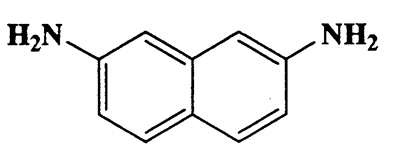 | ||
A diamine is an amine with exactly two amino groups. Diamines are used as monomers to prepare polyamides, polyimides and polyureas. In terms of quantities produced, 1,6-diaminohexane, a precursor to Nylon 6-6, is most important, followed by ethylenediamine. Vicinal diamines (1,2-diamines) are a structural motif in many biological compounds and are used as ligands in organometallic chemistry
Contents
Linear aliphatic diamines
Branched aliphatic diamines
Derivatives of ethylenediamine are prominent:
Xylylenediamines
Xylylenediamines are classified as alkylamines since the amine is not directly attached to an aromatic ring.
Aromatic diamines
Three phenylenediamines are known:
Various N-methylated derivatives of the phenylenediamines are known:
Examples with two aromatic rings include derivatives of biphenyl and naphthalene:
References
Diamine Wikipedia(Text) CC BY-SA
